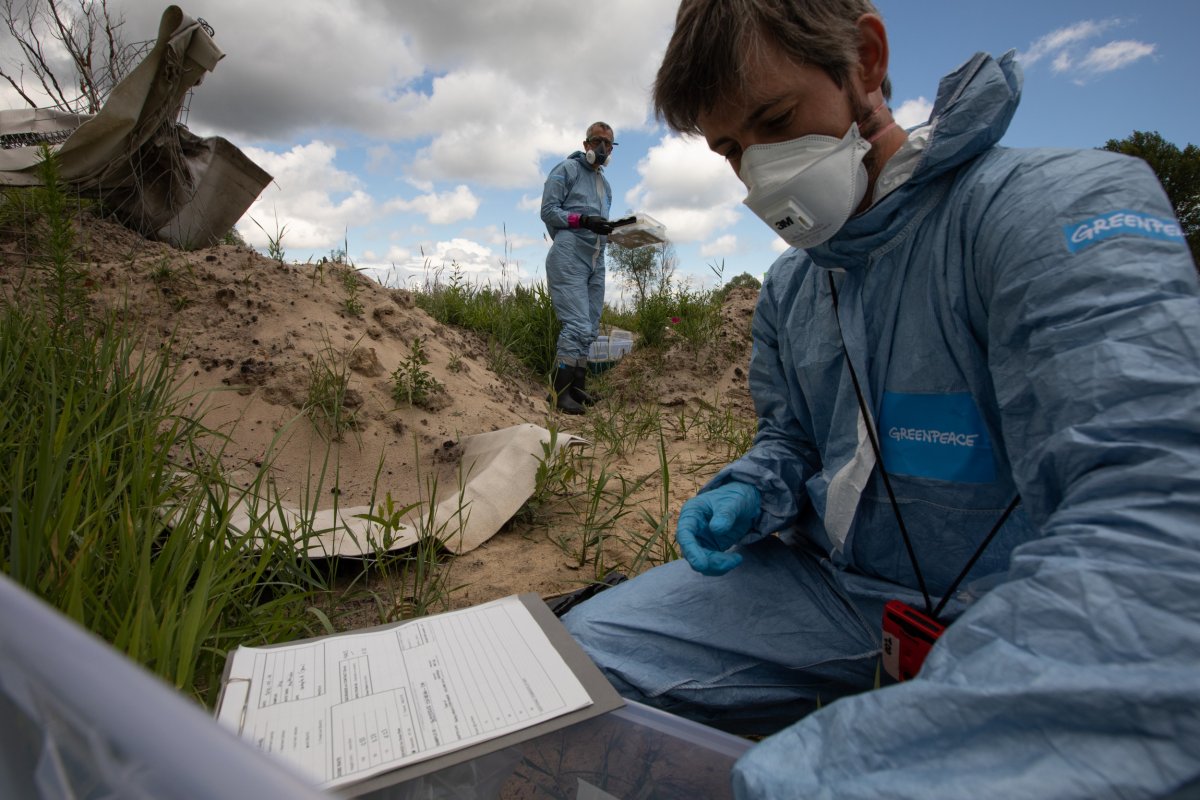Greenpeace is investigating the radiation levels at Chernobyl following the Russian occupation of the area.
Russian forces seized the Chernobyl nuclear power plant—the site of one of the worst nuclear disasters in history—on the first day of its invasion of Ukraine. By March, about 600 Russian soldiers were deployed there.
Following its occupation, Ukraine claimed that radiation levels in the area had increased.
According to a Reuters report from March 28, workers at the site recorded an increase in radiation after Russian soldiers drove their vehicles through a highly toxic zone.
Russian troops left in April, abandoning their stations, trenches and dugouts in the area.

On April 28, the International Atomic Energy Agency (IAEA) issued a statement claiming that while the presence of Russian troops increased the levels of radiation in the area, it did not pose a danger to the surrounding people or the environment, Greenpeace Germany said in a press release.
The environmental organizations' investigation, which is being conducted with approval from the Ukrainian government, aims to assess the IAEA's statement.
Greenpeace is leading a team of radiation experts to the area, in order to measure the radiation levels and to find out what exactly happened during the Russian occupation.

In a statement, Shaun Burnie, a nuclear expert from Greenpeace Germany on site in Chernobyl, said researchers "want to know what really happened on the ground" as the "IAEA's information so far is insufficient."
Burnie told Newsweek: "[We want to] basically try and document and understand the situation, I think particularly motivated by a rather superficial assessment from the IAEA.
"It's a really complex situation here and that wasn't really explained in any way. And so we want to try and understand better what the impact has been of the Russian occupation...
"Of course, Chernobyl was significantly contaminated with very high levels of radiation, but it's also a really complex, massive area. And so understanding what the situation was on the ground where the Russians were, where they were based, where they were living that's something we obviously wanted to investigate."
Burnie said that if a nuclear power plant—even one that is out of commission—is under military occupation, there are "key safety functions" that must be maintained.

Despite Chernobyl being mainly a ghost town, employees are still stationed there in order to maintain the site's safety protocols. According to the BBC, 200 employees remained at the site during the Russian occupation, despite supply issues.
The employees are responsible for monitoring radiation in the environment, nuclear waste stores, the functioning of the exclusion zone, as well as forest fires in the area.
"And when you're under Russian military occupation, that clearly is put in direct risk. And so that was one of the things we wanted to come and investigate. What has actually been the impact of the Russian occupation, on the people and on the ability of the State agency to actually function and do his job," Burnie said.
"[We will also asses] the issues around radiation in the environment and areas where the Russian military were clearly in occupation, including the trenches."
Update 07/19/22, 4:00 a.m. ET: This article was updated to include a new video.
Uncommon Knowledge
Newsweek is committed to challenging conventional wisdom and finding connections in the search for common ground.
Newsweek is committed to challenging conventional wisdom and finding connections in the search for common ground.
About the writer
Robyn White is a Newsweek Nature Reporter based in London, UK. Her focus is reporting on wildlife, science and the ... Read more





